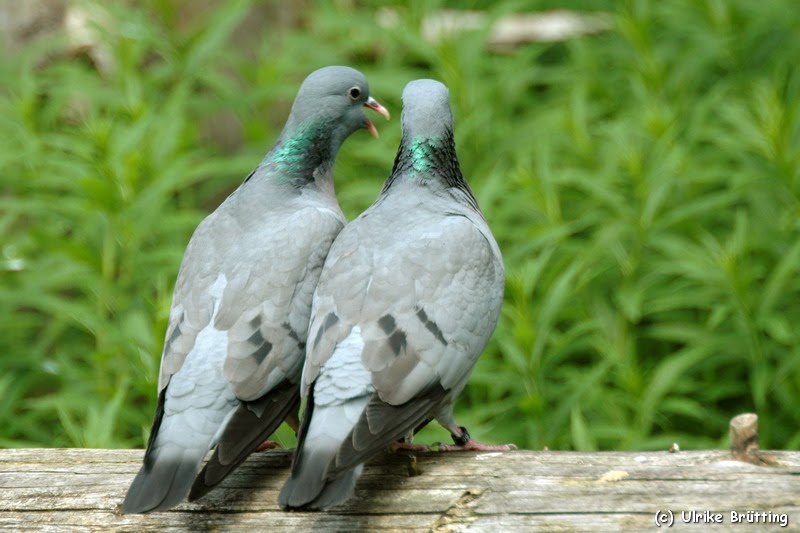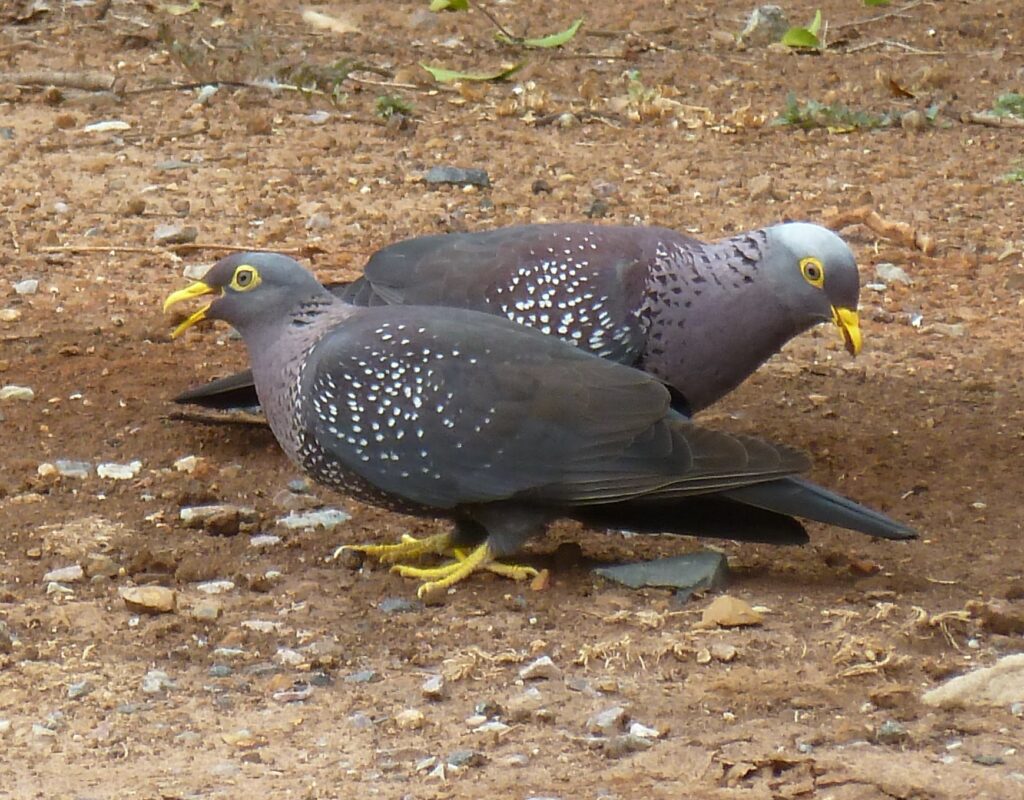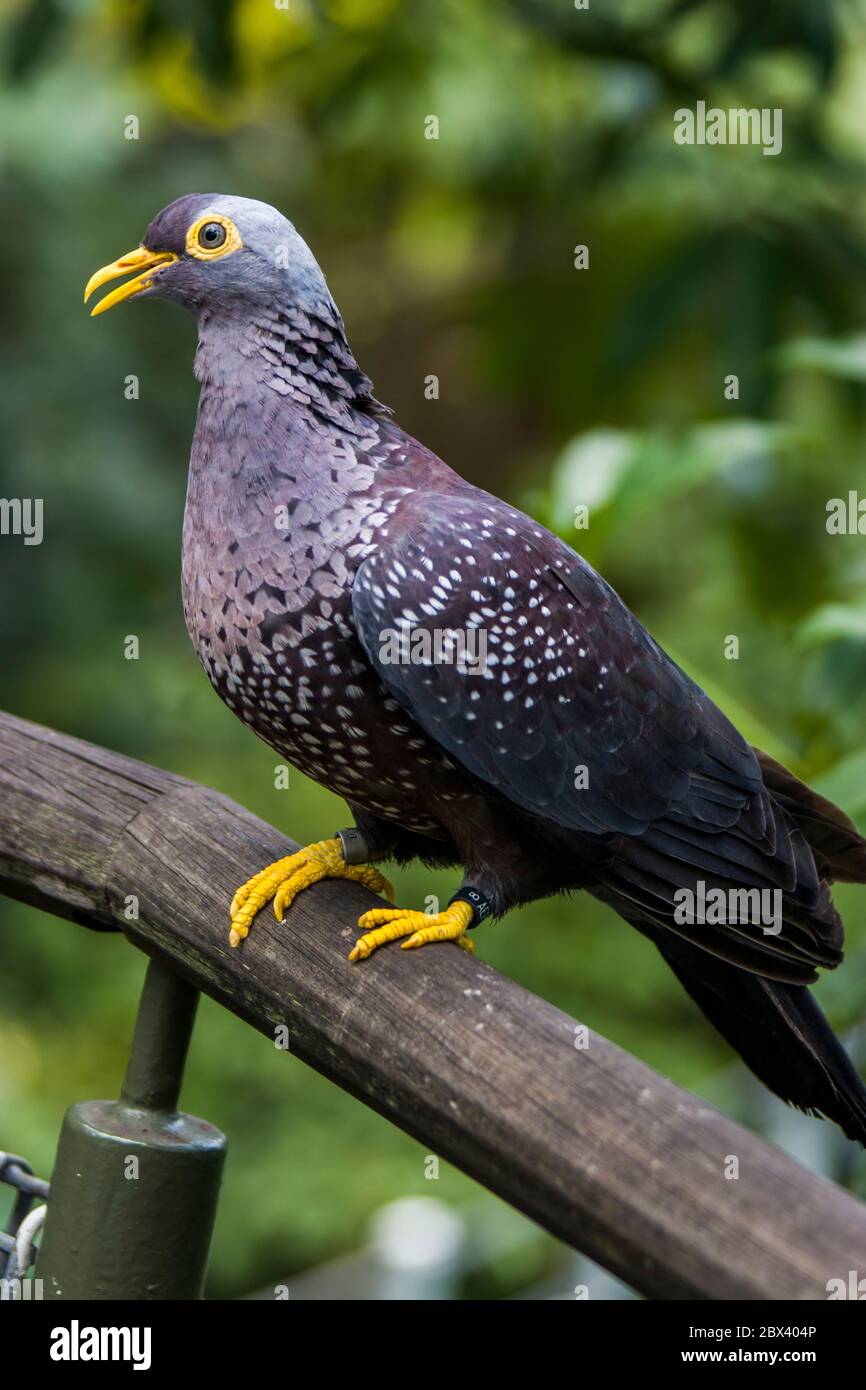The African Olive Pigeon: Columba Sjostedti
Share
The African Olive Pigeon, scientifically known as Columba sjostedti, is a fascinating bird species belonging to the Columbiformes order and the Columbidae family. This unique pigeon is primarily found in the highlands of Cameroon, where it thrives in mountainous regions above 6000 feet. In this article, we will explore the taxonomy, physical characteristics, habitat, diet, behavior, reproduction, and conservation status of this remarkable bird.

Taxonomy
The African Olive Pigeon is classified under the following taxonomic hierarchy:
- Order: Columbiformes
- Family: Columbidae
- Suborder: Columbae
- Subfamily: Columbinae
- Species: Columba arquatrix
- Subspecies: sjöstedti
- Type: Columba sjostedti Reichenow, Journ. f. Orn., 46, 1898, p. 138 (Cameroon)
This classification highlights the pigeon’s close relationship with other members of the Columbidae family, which includes various species of doves and pigeons.
Physical Characteristics
The African Olive Pigeon is a medium-sized bird, characterized by its robust body and distinctive plumage. The feathers are predominantly olive-green, which provides excellent camouflage in its natural habitat. The bird has a relatively short tail and a small head, with a slightly curved beak that is well-adapted for its diet.

Habitat
This species is endemic to the highlands of Cameroon, where it inhabits montane forests and wooded areas. The African Olive Pigeon prefers elevations above 6000 feet, where the climate is cooler and the vegetation is lush. These habitats provide ample food sources and nesting sites, making them ideal for the species' survival.
Diet
The diet of the African Olive Pigeon primarily consists of fruits, seeds, and berries. The bird plays a crucial role in its ecosystem by aiding in seed dispersal, which contributes to the growth and regeneration of forest plants. Its foraging behavior often involves gleaning food from the ground or foraging among the branches of trees.

Behavior
The African Olive Pigeon is known for its gentle and social behavior. These birds are often seen in pairs or small groups, engaging in various activities such as preening and foraging. They are generally quiet but can produce soft cooing sounds, especially during courtship displays. Their flight is characterized by a steady, flapping motion, which allows them to navigate through their mountainous habitat with ease.
Reproduction
Breeding typically occurs during the rainy season when food is abundant. The African Olive Pigeon builds its nest in the dense foliage of trees, using twigs and leaves to create a secure structure. The female usually lays one or two eggs, which both parents incubate. After hatching, the chicks are cared for by both parents until they are ready to fledge.

Conservation Status
Currently, the African Olive Pigeon is not considered endangered, but its habitat is threatened by deforestation and human encroachment. Conservation efforts are essential to protect the montane forests of Cameroon and ensure the survival of this unique species. Birdwatchers and conservationists are encouraged to support local initiatives aimed at preserving these vital ecosystems.

Observing the African Olive Pigeon
For birdwatchers interested in observing the African Olive Pigeon, the highlands of Cameroon offer the best opportunities. Visiting during the breeding season can increase the chances of spotting these birds as they engage in courtship displays. It is advisable to explore areas with dense forest cover and to remain quiet to avoid startling the birds.
The African Olive Pigeon is a remarkable species that contributes significantly to its ecosystem. Its unique adaptations and behaviors make it a fascinating subject for study and observation. By understanding and protecting this bird, we can help preserve the rich biodiversity of the highlands of Cameroon.